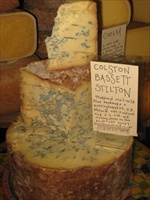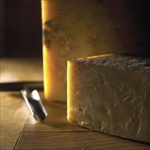A wise man once said, "When you have nothing to say, it's best to say nothing." So, just sayin', I ain't been sayin', know what I'm saying?
Here I am, an hour to kill waiting on some software to download to complete a client project. So, off the clock, and to the blog to finally say something.
Yikes, December 22 already. Scratch that, finally! This year has been like wading through treacle. Or like watching our two Jack Russell Terriers try to get through the dog door at the same time. A lot of activity, no apparent progress. I haven't felt like I had much to say recently. Not much news on the business and professional fronts. For much of this year I alternated between feeling barely above water, or going crazy with the frustration of all plan, no progress. As I look back on this year, I realize it wasn't half bad. It actually was a most interesting year. When things seem to be slow, there's really lots going on!
I'm not a big fan of New Year's Eve. I'd prefer to do it Masterpiece Theater style, rent an old cottage on a remote coastline, hunker down with a bunch of friends, and experience drama Alan Ayckbourn would be proud to script. Failing that, spouse, dogs, and I hunker down in front of the TV, and they're waking me for midnight. Beach towns in Delaware - not so big on the festivities. I'm thankful I have a family to hunker down with, regardless of falling asleep before the Swarovski chandelier drops.
I'm always in a funny mood this time of year. Maudlin verging on muddling. Excited verging on over- stimulated. How does one process the cognitive dissonance of looking back as well as forward? It's all a little schizophrenic. If we're not spending the holidays in Wales, I get very homesick. Odd when I've been in the States going on twenty years. I miss my family very much, and in a great smack in the face with a wet kipper kind of irony, I had no appreciation of how beautiful Wales was whilst living there!
Here in Delaware, the mid-Atlantic coastline naps, emitting the quietest of sighs. Quite lovely in its understated elegance. Yet in this year of subliminal progress, I feel the need for cliffs with their raw outrage squaring off shoulder to shoulder with the sea, energizing my mood, challenging my assumptions. I miss landscape in this flattest of states. I miss a dramatic meeting of land and sea.
Tom laughs when visiting UK coasts. "Why are there no fences? How can you walk right up to the edge?" Well he's not quite that polite about it! It was the same outrage when trying to find Stonehenge on a very dark December evening on Salisbury Plain. "You'd think a national monument would be lit up!" I think they're too busy appreciating the view to ponder a plummet and well, who in their right mind would visit Stonehenge in the dark? Just sayin'...
It's, "Armageddon Week" on the History Channel. Any other year, the timing of such an odd collection of programming would cause a few raised eyebrows in this season of celebration and joy. Yet this year with everyone in such a high state of anxiety, it actually gets viewers - hard when you're up against the open house schedules. Nothing like a good apocalypse to get you in the party mood.
So, back to the treacle. Oh the irony. I love treacle! There's two jars of it in the pantry awaiting the day when I get the odd urge to mix up a sponge pudding, or pastry for a tart. This year seems to have been about appraisal, closure, simplification, and, appropriately for this season, an anticipation of hard work, and good things ahead. My high school biology teacher on seeing my scruffy lab desk cautioned me, "Mr Meddick, work in a puddle, mind in a muddle." It appears this year's theme for me has been working on the puddle. No puddle no muddle. No muss, no fuss!
I got my early professional training in software development for IBM UK. A key part of putting a project into production was the post implementation project review. We called it the, "Lessons Learned Review." I was one of the wierd people who looked forward to this meeting. The job was done, the overtime checks cashed (those where the days!). The meaning in the post-implementation review, for me, was in lessons to carry ahead - forward momentum, not about life in the rear view mirror. So this week as we move through and beyond the symbolism of the Christmas and Channukah celebrations, we hit that quiet week before New Year. No physical work really gets done. Retailers and service professionals are exhausted. Manufacturing and other production businesses are quiet. We go within. We reflect (nurse hangovers!), consider our lessons learned, and make forward plans, "resolutions" if you will, that take us on with the new year.
Thank you everyone for your business this year and for your support and encouragement for our future plans.
Have a safe holiday period wherever you may be celebrating.
P.S. I did learn something of interest on Armageddon Week. One of only two large extinction-size meteorites to hit the earth impacted in the Chesapeake Bay. We still have a 500 mile crater in the sea floor to show for it. We almost got cliffs! Pity the poor dinosoar sitting at Starbucks that day, complaining that nothing ever happens in Delaware. Bang! Then again maybe he didn't hear the impact above the coffee grinders. Just sayin'...
Here I am, an hour to kill waiting on some software to download to complete a client project. So, off the clock, and to the blog to finally say something.
Yikes, December 22 already. Scratch that, finally! This year has been like wading through treacle. Or like watching our two Jack Russell Terriers try to get through the dog door at the same time. A lot of activity, no apparent progress. I haven't felt like I had much to say recently. Not much news on the business and professional fronts. For much of this year I alternated between feeling barely above water, or going crazy with the frustration of all plan, no progress. As I look back on this year, I realize it wasn't half bad. It actually was a most interesting year. When things seem to be slow, there's really lots going on!
I'm not a big fan of New Year's Eve. I'd prefer to do it Masterpiece Theater style, rent an old cottage on a remote coastline, hunker down with a bunch of friends, and experience drama Alan Ayckbourn would be proud to script. Failing that, spouse, dogs, and I hunker down in front of the TV, and they're waking me for midnight. Beach towns in Delaware - not so big on the festivities. I'm thankful I have a family to hunker down with, regardless of falling asleep before the Swarovski chandelier drops.
 |
| St. Govan's Chapel, Pembroke Coast, West Wales |
| Cliffs - Rhossilli, South Wales |
Here in Delaware, the mid-Atlantic coastline naps, emitting the quietest of sighs. Quite lovely in its understated elegance. Yet in this year of subliminal progress, I feel the need for cliffs with their raw outrage squaring off shoulder to shoulder with the sea, energizing my mood, challenging my assumptions. I miss landscape in this flattest of states. I miss a dramatic meeting of land and sea.
Tom laughs when visiting UK coasts. "Why are there no fences? How can you walk right up to the edge?" Well he's not quite that polite about it! It was the same outrage when trying to find Stonehenge on a very dark December evening on Salisbury Plain. "You'd think a national monument would be lit up!" I think they're too busy appreciating the view to ponder a plummet and well, who in their right mind would visit Stonehenge in the dark? Just sayin'...
It's, "Armageddon Week" on the History Channel. Any other year, the timing of such an odd collection of programming would cause a few raised eyebrows in this season of celebration and joy. Yet this year with everyone in such a high state of anxiety, it actually gets viewers - hard when you're up against the open house schedules. Nothing like a good apocalypse to get you in the party mood.
So, back to the treacle. Oh the irony. I love treacle! There's two jars of it in the pantry awaiting the day when I get the odd urge to mix up a sponge pudding, or pastry for a tart. This year seems to have been about appraisal, closure, simplification, and, appropriately for this season, an anticipation of hard work, and good things ahead. My high school biology teacher on seeing my scruffy lab desk cautioned me, "Mr Meddick, work in a puddle, mind in a muddle." It appears this year's theme for me has been working on the puddle. No puddle no muddle. No muss, no fuss!
I got my early professional training in software development for IBM UK. A key part of putting a project into production was the post implementation project review. We called it the, "Lessons Learned Review." I was one of the wierd people who looked forward to this meeting. The job was done, the overtime checks cashed (those where the days!). The meaning in the post-implementation review, for me, was in lessons to carry ahead - forward momentum, not about life in the rear view mirror. So this week as we move through and beyond the symbolism of the Christmas and Channukah celebrations, we hit that quiet week before New Year. No physical work really gets done. Retailers and service professionals are exhausted. Manufacturing and other production businesses are quiet. We go within. We reflect (nurse hangovers!), consider our lessons learned, and make forward plans, "resolutions" if you will, that take us on with the new year.
 |
| 2012 - it's going to be a great year! |
So, do not misunderstand me reader. I love this time of year. Why? Because I love any time of year, the whole darn experience - spring, summer, fall, winter, Christmas, New Year, and on... Each brings its own rhythm. Sometimes, admittedly, the best you can do, is get through this moment now. Yet, you reap what you sow, and learn from those moments also. Take this season to reflect, appreciate, learn a few lessons, and sow good things for the coming year. Above all let your curiosity outweigh your fear, and always live with an 'attitude of gratitude.' I have some great things resolved for the new year - on the professional, and the business front. Stay tuned for some exciting announcements on the latter. What are your resolutions (plans) for the new year?
Thank you everyone for your business this year and for your support and encouragement for our future plans.
Have a safe holiday period wherever you may be celebrating.
Faith, peace, love, and great food y'all.
P.S. I did learn something of interest on Armageddon Week. One of only two large extinction-size meteorites to hit the earth impacted in the Chesapeake Bay. We still have a 500 mile crater in the sea floor to show for it. We almost got cliffs! Pity the poor dinosoar sitting at Starbucks that day, complaining that nothing ever happens in Delaware. Bang! Then again maybe he didn't hear the impact above the coffee grinders. Just sayin'...























































